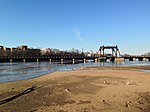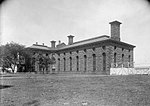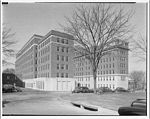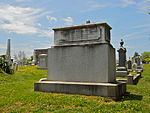Seafarers Yacht Club
1945 establishments in Washington, D.C.Anacostia RiverClubhouses on the National Register of Historic Places in Washington, D.C.Yacht clubs in the United States
The Seafarers Yacht Club, originally known as the Seafarers Boat Club, is a boating club on the Anacostia River in Washington, D.C. It has been identified as "one of the oldest—if not the oldest—operating Black boating club" in the United States.In 2022, its clubhouse at 1950 M Street SE was listed on the National Register of Historic Places.
Excerpt from the Wikipedia article Seafarers Yacht Club (License: CC BY-SA 3.0, Authors).Seafarers Yacht Club
M Street Southeast, Washington
Geographical coordinates (GPS) Address Nearby Places Show on map
Geographical coordinates (GPS)
| Latitude | Longitude |
|---|---|
| N 38.879166666667 ° | E -76.974722222222 ° |
Address
Anacostia Community Boathouse
M Street Southeast 1900
20003 Washington
District of Columbia, United States
Open on Google Maps







